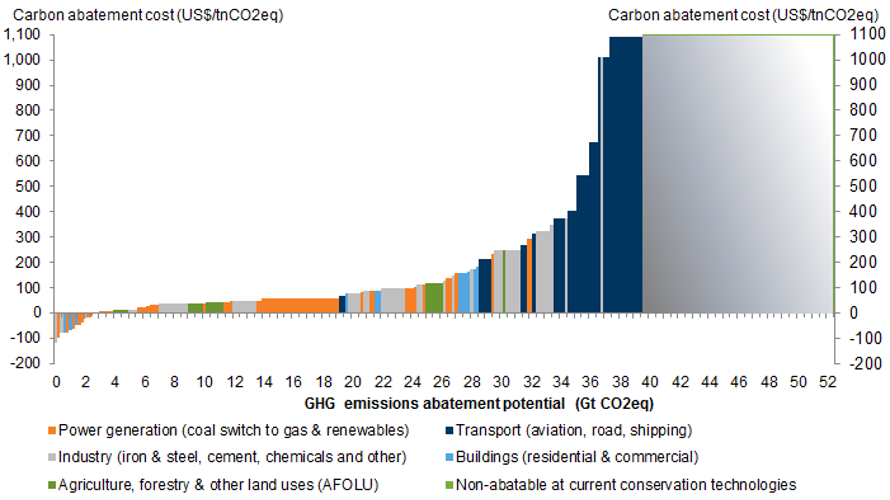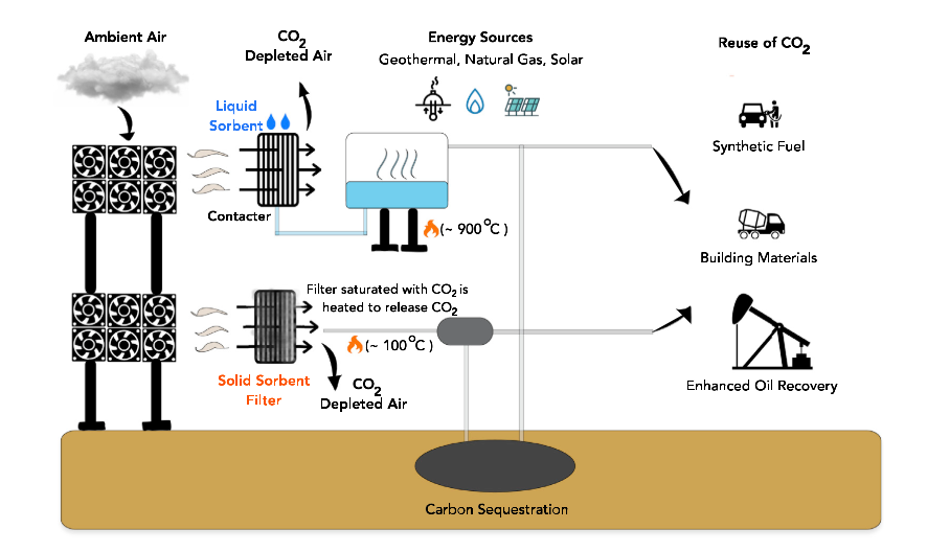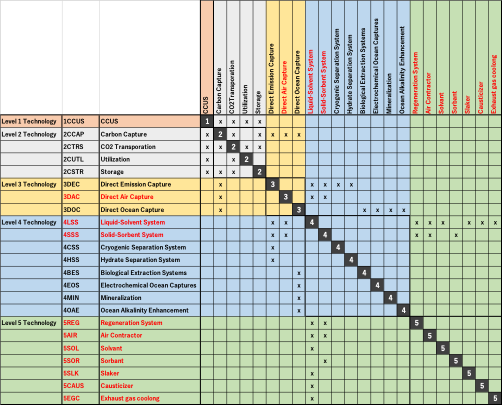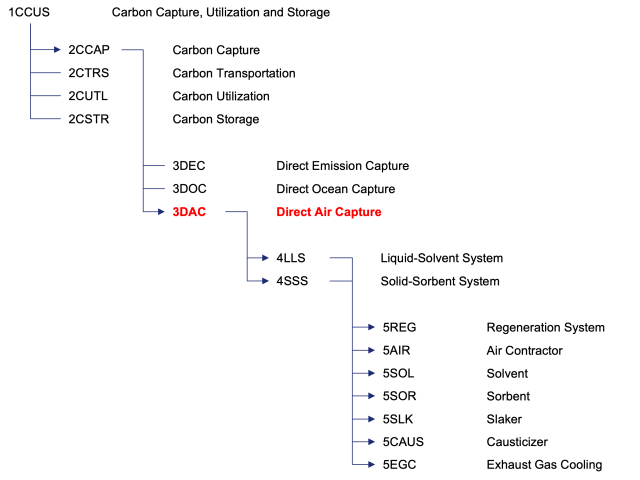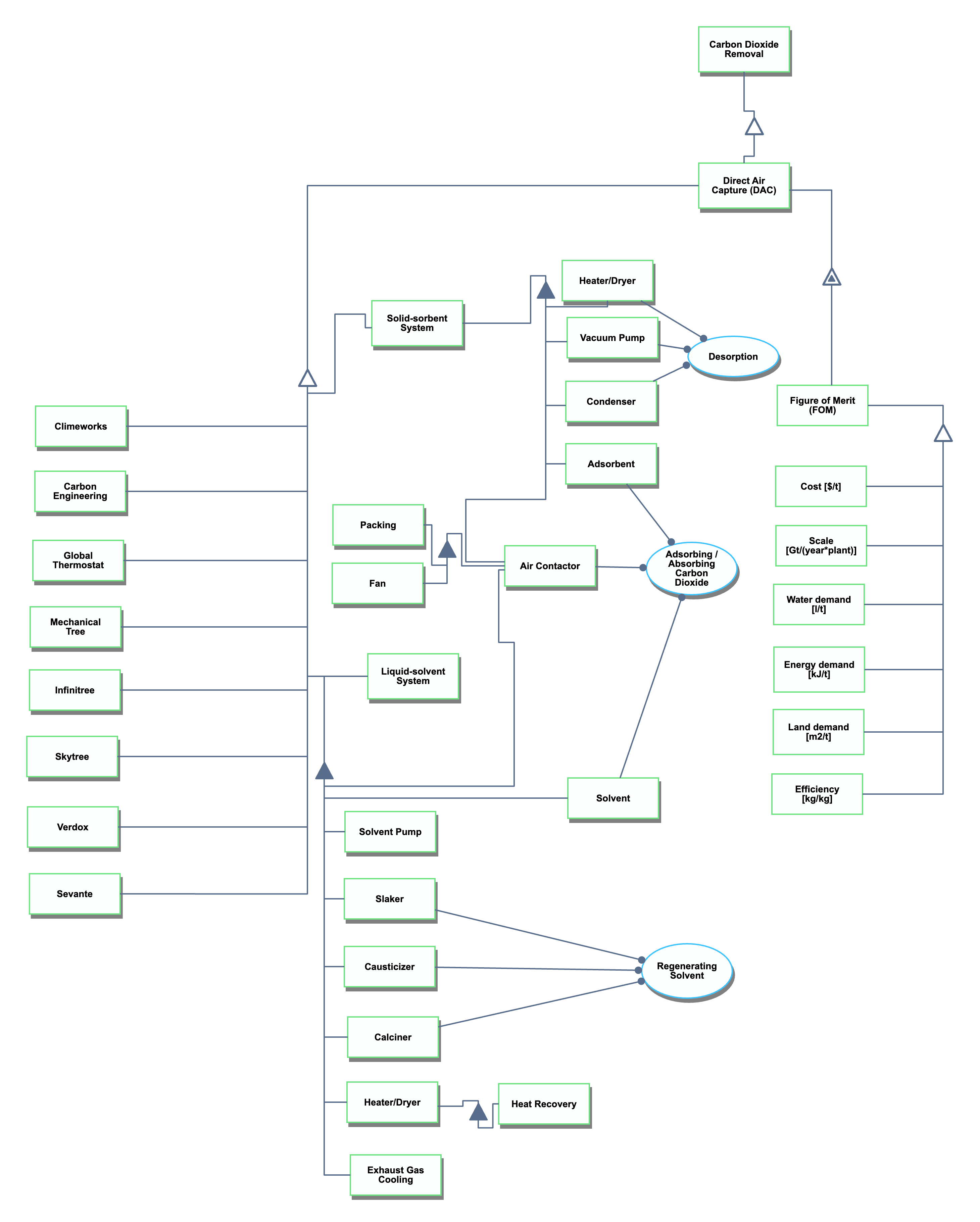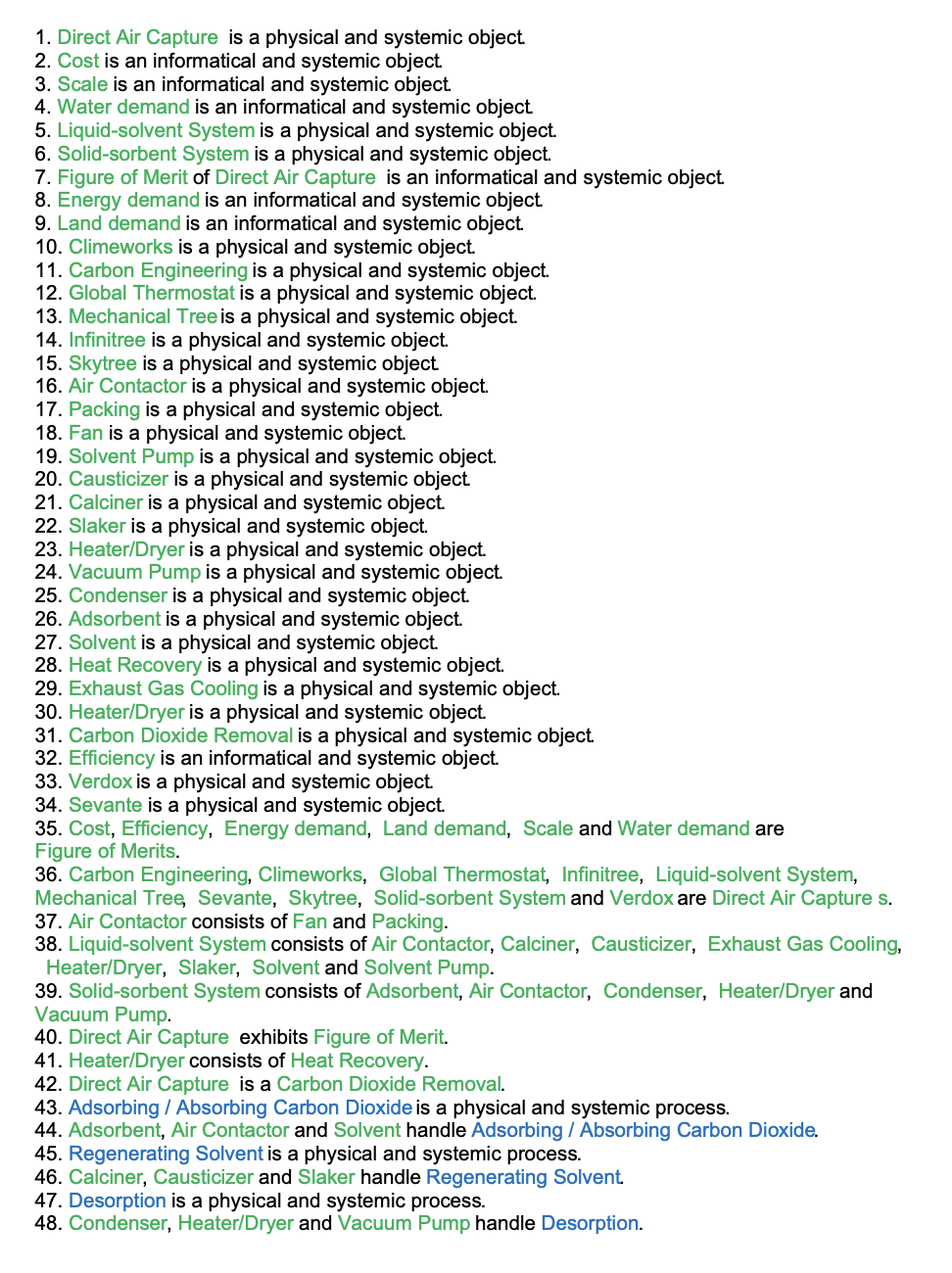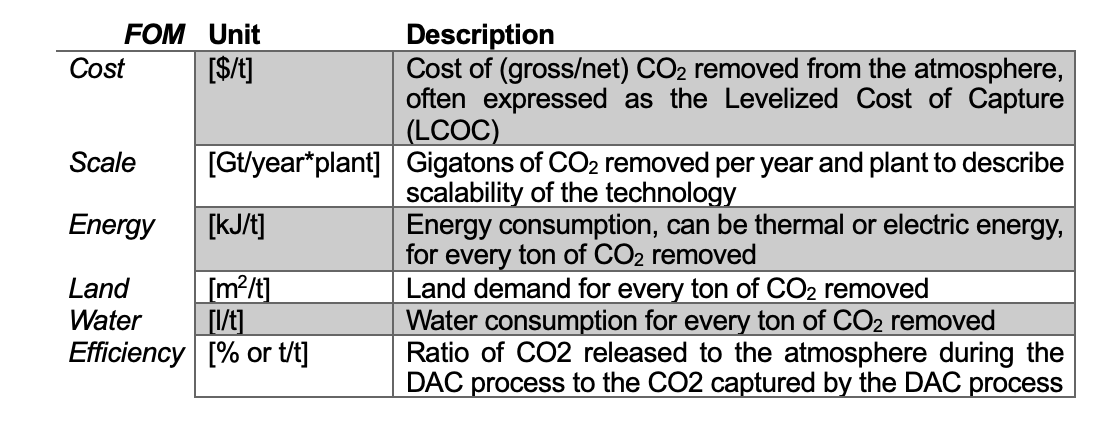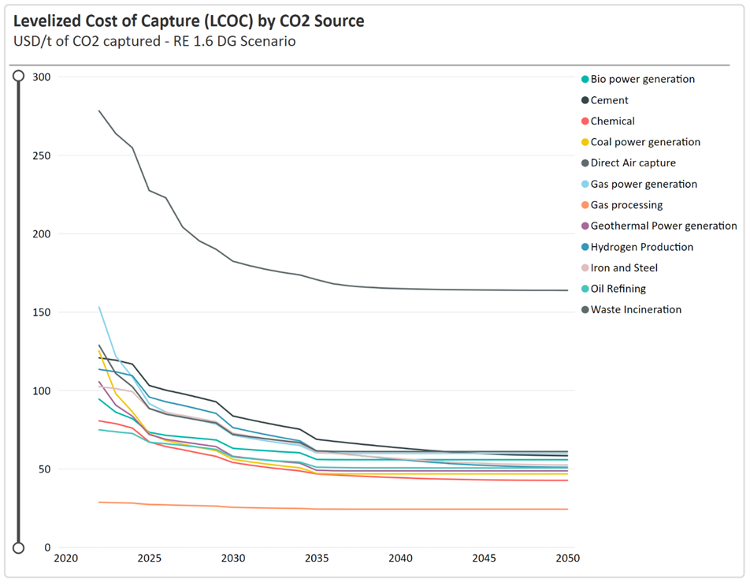Carbon Dioxide Removal
Roadmap Overview
- Carbon Dioxide Removal
Carbon capture, utilization and storage (CCUS) or carbon capture and storage (CCS) is the name given to the family of carbon removal technologies being developed to limit the negative climatic effects of greenhouse gas emissions. Today, over 35 Gt/year of carbon dioxide (CO2) are emitted from energy generation and industrial processes. The Intergovernmental Panel on Climate Change (IPCC) suggests that between 2 and 20 Gt/year of CO2 must be removed from the atmosphere to minimize climate change.
CCUS consists of three distinct processes: Carbon capture, carbon transport, and carbon storage (or sequestration). Carbon capture is the chemical process of extracting a high purity CO2 stream from a mixed gas stream. Carbon capture techniques span a variety of liquid solvents, solid adsorbent, membranes, solid-looping, and inherent CO2 capture. Carbon capture can be applied to industrial processes such as natural gas processing, flue gas from coal or gas power plants, methane reformers, oxy-fuel, or cement plants to prevent CO2 venting to the atmosphere, as well as negative emission applications such as direct air capture (DAC) and direct ocean capture (DOC).
- Direct Air Capture
Direct air capture (DAC) is a negative emission technology for the direct removal of CO2 already in the Earth’s atmosphere. Figure 1-1 displays sources of carbon dioxide with their associated cost of abatement. It is apparent that certain CO2 sources are difficult to abate with point source capture methods; so an indirect and distributed CO2 capture method like DAC is used to offset the hard-to-abate emissions.
DAC describes an array of chemical reactions or absorption processes that separate CO2 from the air from the atmosphere. The process consists of three steps. First, the air is fan-forced into a sorbent. Then, the CO2 reacts with the sorbent. Lastly, the CO2 is detached from the sorbent by adding thermal or electric energy.
Broadly, there two groups of DAC technology. On the one hand there are high-temperature, liquid sorbent processes, on the other hand, there are low-temperature, solid sorbent processes. Regardless of the technology used, the processes must be measured against the same dimensions. Suggested dimensions are cost, capture efficiency, water demand, energy demand and land demand.
Design Structure Matrix (DSM) Allocation
The DSM was created in the context of Carbon Capture, including DEC (Direct Emission Capture), DOC (Direct Ocean Capture), and DAC (Direct Air Capture). As the DSM shows sparse connections among the level-3 technologies, the technology will focus on DAC. The level-4 and level-5 technologies related to DAC are included in the DSM. At level-5, we see some interconnection between the liquid-solvent system and the solid-sorbent system. The tree highlights the key relationships in the DSM from level-1 CCUS to several level-5 technologies.
Roadmap Model
We provide an Object-Process-Diagram (OPD) of the DAC roadmap in the figure below. This OPD captures the main object of the roadmap (DAC technology), its main competitors, its decomposition into subsystems, its characterization by Figures of Merit (FOMs) as well as the main processes performed by the system.
- OPD
- OPL
Figures of Merit
- FOM Definitions
The table below shows a list of FOMs that are appropriate for the assessment of DAC technologies.
- FOM trends
CCUS markets vary geographically with a variety of emission trading schemes (ETS) (e.g., Australia), carbon taxes (e.g., European Union), and tax credits (e.g., US). In the US, the Inflation Reduction Act (IRA) provides a 45Q tax credit of $180/t for CO2 captured and stored using DAC. Currently, the levelized costs of capture (LCOC) for DAC nominally range between $200-$600/t. For DAC to be economic over the long term, consensus is that costs have to be reduced to $100/t or less on a gigaton scale by 2050.
DAC is only just now emerging as an industry (rather than a scientific pursuit) thanks to the financial incentives of the IRA. With an industry only just starting to expand and scale plants from capacities of thousands of t/year to millions of t/year, today’s high LCOC is forecast to reduce over time with economies of scale. Rystad Energy have forecast LCOC for different CO2 sources; predicting a long-term LCOC of $160/t by 2035. The near exponential decline in LCOC is expected to be achieved through economies of scale of current technologies; a step change in LCOC will require further technical breakthroughs in DAC technologies.
